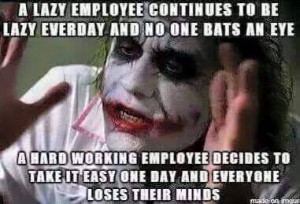Retail Job Growth Illusion: More Workers, Fewer Hours
The rank-and-file retail workforce has never been through an employment drought like the kind seen in the past two years, outside of a recession or its immediate aftermath.
While retail-industry woes are a regular news staple, the sector’s addition of 308,000 nonmanagerial jobs from December 2011 to December 2013 — before severe winter weather began skewing economic data — has provided the appearance of a recovery in payrolls. Yet that increase was offset by a slide in the average workweek to 30 hours from 30.7 hours.
In fact, total hours clocked by nonsupervisors didn’t budge in that two-year span, Bureau of Labor Statistics data show. (They later took a weather-related dive to start 2014.)
Income Inequality Debate
“When you go into stores these days, it’s increasingly difficult to find service,” said Ken Perkins, president of Retail Metrics.
Companies have been adopting self-checkout machines and scanners to check prices, while shifting more of their investment to their online operations, he pointed out.
This recent, unusual period of stagnation is important to consider because no sector employs more low-wage workers, so none may be more central to the debate over how to narrow inequality.
The retail industry encompasses 13.1 million nonsupervisory workers who earn, on average, just over $14 an hour. And the number making less than $10 an hour tops 5 million.
The key question is how retail-sector employment of low-wage workers, currently at a standstill, will hold up if employers are mandated to take on more responsibility for health care coverage and pay a substantially higher minimum wage.
Meanwhile, most retailers are already suffering from consumers still hobbled by an incomplete jobs recovery, aggressive price competition, and the ongoing shift to online sales.
And while Washington is debating an online sales tax to help brick-and-mortar retailers compete, ObamaCare and minimum-wage mandates could encourage low-labor online business models and make expansion plans somewhat riskier.
Brick-and-mortar retail is “a shrinking industry” that’s looking to cut costs, Perkins said. “For them to be able to generate additional revenue to cover the additional cost of health care and a higher minimum wage is going to be very difficult.”
Warning Sign?
The decline in the average workweek in 2013 came as anecdotes piled up about retailers cutting work schedules below ObamaCare’s full-time threshold of 30 hours per week and offers a possible warning sign that the industry won’t take on such mandates without a hitch.
In the long-troubled office supplies sector, Staples (SPLS) began enforcing a limit of 25 hours per week for part-timers in January, not long before it announced plans to close 225 stores.
Among general merchandise retailers (department stores and discounters) and clothing stores, their 3.7 million nonmanagerial workers are down a little more than 2% over the past two years, while the total number of hours they work has tumbled more than 9%.
Florida-based Bealls Department Stores and David’s Bridal are among retailers in these categories restructuring their workforces to limit the number of employees above the 30-hours-per-week threshold.
Even as nonmanagers have been losing jobs at clothing and general merchandise stores, the number of managers has been rising in both of these groups and in the retail industry as a whole — by nearly 100,000 in the past year. Yet those gains seemed to peter out in the past three months as store-closing announcements picked up.
RadioShack (RSH), J.C. Penney (JCP) and Children’s Place (PLCE) are among other retailers that have announced plans to close stores recently.
Many economists make the argument that better-paid employees can have positive effects on a firm’s bottom line due to better morale, higher productivity and lower turnover. A rise in the minimum wage also could support higher demand, though a need to raise prices could have the opposite effect.
The Congressional Budget Office’s recent analysis of the Democratic proposal to raise the minimum wage to $10.10 an hour was widely reported to result in a loss of 500,000 jobs.
Yet that estimate didn’t account for the ObamaCare employer mandate. The nonpartisan scorekeeper said that combining a minimum-wage hike with ObamaCare’s employer penalties would likely cause deeper job losses than a wage hike alone.
ObamaCare’s extra cost “boosts the likelihood that employers’ savings from reducing the size of their workforces would exceed their adjustment costs” necessary to retool for those job cuts, such as installing labor-saving equipment, the budget agency said.
Yet it’s possible that the employer mandate wouldn’t magnify job losses due to a higher minimum wage, but rather intensify pressure on low-wage employers to keep work schedules below 30 hours.
Read More At Investor’s Business Daily: http://news.investors.com


























Recent Comments